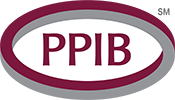Niche risks like tattoo parlors and marijuana shops attract a special kind of broker.
By Jack Roberts
Funky, that is unusual, risks usually require specialty excess and surplus, nonadmitted insurance coverage.
These narrow, often emerging niche markets also depend upon brokers with a thorough understanding of their client’s industry, the insurance markets, the complexities of the risks they face and the ability to adjust and develop new coverage as the risks mature and grow.
Many, if not most, of the brokers that specialize in this kind of coverage are wholesalers and program administrators.
Susan Preston, president of Professional Program Insurance Brokers in Novato, Calif., sometimes called the queen of the funky insurance business, got her start when her first boss told her, “You need to think of something different to do” and he didn’t mean another line of work. “Anyone can insure the usual like an apartment building, or a retail store or a Main Street business,” he told her. “But not anybody can insure the unusual.”
Body Art
Preston took that advice to heart and began by investigating the market and discovering that the massage business could be broken into two segments: “There is one massage business that commonly gets sued and then there is the other kind that never ends up in court.”
Preston jump-started her new firm by developing her own expertise in the massage business.
Realizing the value of unusual risks, she expanded to cosmetic tattooing — an attractive medically based business that’s less risky than the litigation-prone segment of the massage and tattoo business.
Cosmetic tattooing then led to insuring body piercing and she later expanded into the more traditional tattoo market.
Each business, typical of an unusual risk, has segments that are uninsurable usually because of increased frequency and severity of losses. For example, Preston said, certain body parts — for both piercing and tattooing — are not easily insured.
Today Preston’s Professional Program Insurance Brokers operates 34 programs. Most of them are unusual, and require excellent underwriting, carefully worded policy language and endorsements, aggressive risk management and strong safety and loss control programs focused on employee training.
Almost all of these markets for Preston are placed through London using more than a dozen Lloyd’s syndicates.
“We are constantly looking for new opportunities,” Preston said.
Her focus is on general liability, professional liability and product liability, but she also offers other complementary coverage for the businesses where needed, such as property.
Underwriting: Broker Expertise
It’s not coincidental that when former President Bill Clinton spoke at last fall’s meeting of the Target Markets Program Administrators Association, he began his remarks by noting that the TMPAA website boasted an impressive array of hard to place risks from “crane riggers to roofers to tattoo shops.”
The former president specifically cited the tattoo program wondering aloud “how you price coverage for a tattoo shop.”
And that’s among the key issues that program administrators — brokers that specialize in narrowly defined niche risks — need to consider. Unlike the more traditional independent brokers, program administrators must have extensive underwriting skills because they typically “hold the pen” or the ability to bind a carrier to coverage.
It’s also a program administrators’ knowledge of a relatively small industry that enables them to underwrite the risk and also market it to the entrepreneurs and small businesses that often make up the client base. For many carriers, these smaller industries can be overlooked markets.
Wholesalers and program administrators that are skilled in underwriting for these risks can bring a profitable book of business to the carrier.
Although wholesalers and program administrators generally don’t hold risk, they can effectively become the outsourcing arm for underwriting, policy development and administration, risk management and claims for their insurance carrier partners.
Pyrotechnics
Take the fireworks market, or as Jeremy Bryant calls it, the pyrotechnics market. Bryant is executive vice president of Britton Gallagher, a program administrator based in Cleveland.
He worked with his team of specialists to arrange the coverage of the New Year’s Eve extravaganza in Dubai this year, obtaining coverage for the 163-floor Burj Khalifa, currently the world’s tallest skyscraper.
During the show, fireworks were periodically ignited, floor by floor, throughout the celebration.
To date, the half-hour show is the largest fireworks display ever presented.
Bryant’s firm also brokered the pyrotechnics displays based at two of the chains of islands just offshore.
His clients generally are the firms that design, produce, promote and operate these huge displays. Typically, most of these displays are presented by municipalities ranging from small towns to the largest cities. Almost always, the displays are regulated by local government.
The risk today isn’t that a worker will get hurt igniting the display because almost all of the events are high tech and controlled by computers. In the Dubai fireworks at the Burj Khalifa, the fireworks were ignited using a sophisticated program.
“You have to watch out for all the safety issues, especially from the spectator standpoint,” he said.
Coverage included marine and hull insurance for barges where many of the displays were based. (There was one claim for a damaged barge where a portion of the fireworks were ignited.)
Bryant’s group placed all nonadmitted surplus lines coverage and “worked with a local Dubai broker to help them arrange admitted coverage from some local Dubai carriers.”
Pyrotechnic risks can be significant and potentially severe, Bryant said.
“But the business is really safe and getting safer. Remember, you’re dealing with gun powder at these displays. It’s very technical. The operators must look at all kinds of factors from wind speeds to related weather issues. We work with people we trust — trust is key to success in this market.”
Bryant estimated that he and his team (Eric Treend, Tami Bridgeman, and Hal Rindels) write as much as two-thirds of the professional pyrotechnics market in the United States — with the coverage focused on the two big fireworks events of the year — July 4th and New Year’s Eve.
With their carrier partners they can insure all lines of coverage including property, general and professional liability, inland marine and commercial auto.
Cannabis Heats Up
No discussion of the funky risk management business could be complete without citing the fast-growing cannabis business — a risk that is more complex than might be expected.
The business began with the medical marijuana business but now has quickly expanded to Colorado and Washington State, which now allow recreational use and retail sales.
Michael Aberle, senior vice president of Next Wave Insurance and MMD Insurance in San Diego, said the range of risks in the business is varied.
Because many of the businesses are entrepreneurial in nature, trust between the client and broker is essential.
“We work with two cannabis trade associations to develop and market policies and we are active in those associations. That helps us market and build the trust needed to succeed.”
There are the storefront, retail outlets for both recreational and medial dispensing of cannabis (and something called dispensing insurance). But Next Wave Insurance Services’ market also includes the cannabis growers (including a version of crop insurance), the distributors and the manufacturers, security firms and a group of emerging business.
For example, there are firms that specialize in the design and manufacturing of marijuana paraphernalia and there is a newly forming chain of bed and breakfasts that offer cannabis to their guests.
To many of the businesses, property insurance is especially important. If there is a fire, the potential loss in terms of the value of the inventory can be significant.
Also, it’s mostly a cash business so protection against theft is very important.
One common risk that is usually uninsurable is protection against prosecution by a government entity for an illegal act — an issue at the heart of many cannabis-related businesses and usually excluded from standard general liability policies.
New Wave has developed coverage for this risk. The coverage is for legal defense against government actions against the business. If the insured is found innocent or not guilty of a state or local law, the policy will reimburse up to $5,000 in legal costs.
“Our coverage, however, doesn’t include actions by the federal government,” Aberle said.
It’s this kind of ability to create new kinds of coverage that is at the heart of insuring many unusual businesses.
He offers a version of a BOP policy for the smaller retail operation and also offers product liability coverage to the developers of new products (such as “edibles”).
One emerging risk, he pointed out, is that as more and more states relax the local laws, “we are insuring a lot of tenants that will need liability coverage in anticipation of legalization.”
Like other unusual risks, the “industry is not your standard market. We’re in the surplus lines market with no admitted carriers. That market offers flexibility and the ability to expand quickly because the surplus lines carriers don’t need to get state by state approval of every new policy change.”
Are We Having Fun?
If Susan Preston is the queen of funky insurance, then Larry Cossio, president of Cossio Insurance Agency in Simpsonville, S.C., is probably the king.
Cossio has been in the business of insuring the amusement industry for more than 30 years. He’s insured almost every kind of amusement risk there is — from inflatables (those bounce houses for kids and family events) to mechanical bulls at bars, to paintball parks.
Recently he began coverage of “Mudders,” the incredibly challenging and often dangerous obstacle-course races in the mud that can attract thousands of entrants to a single event.
Insurance coverage is essential, he said, because the risks can be huge. Take inflatables. Stories about accidents appear regularly and dramatically in the news. Cossio noted that one outdoor inflatable was caught by the wind and went 40 feet aloft over four lanes of traffic.
Not only is there the chance of catastrophic injuries to young children — children have died from falls and been permanently disabled — but a floating moon bounce can cause severe auto accidents.
The dangers are only limited by your imagination. Worse, this risk can be both frequent and severe — a formula for failure of both the operator owner and potentially an insurer.
Much of the largest risk comes from lawsuits filed by the injured parties or their parents.
Risk management, and safety and loss prevention then are at the heart of any insurance program, he said. Outdoor inflatables, subject to the weather and thus the wind, require that the bounce house be secured at all four corners with stakes and be able to withstand high winds. Training and supervision, properly documented, remains the essential cornerstone of an effective risk management program.
As far as insurance coverage, the requirements are wide ranging, including general liability, professional liability, commercial auto and, for employees of amusement/inflatable businesses there is EPLI, workers’ comp, health and life insurance.
Some of the risks are unexpected. For example, since many of these businesses serve a market of children, abuse and molestation coverage is clearly needed.
As far as those mechanical bulls, beyond the obvious injuries that can occur (and the need for a proper, signed release form), most of them are in bars. And that’s where the risks from alcohol can make a bad situation worse. Talk about funky.

